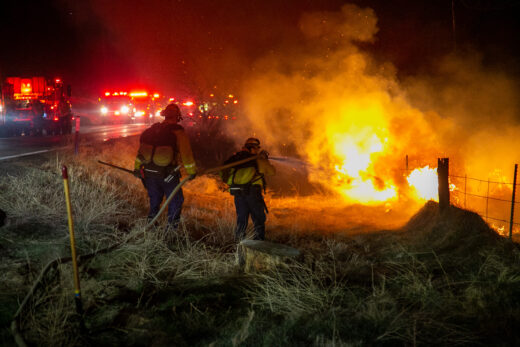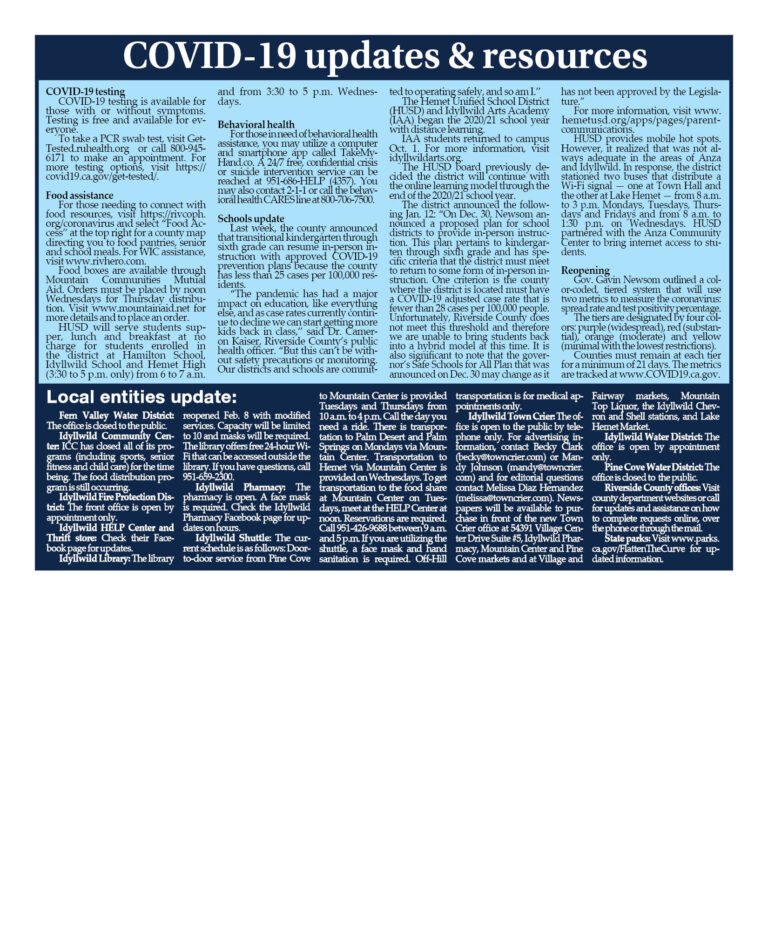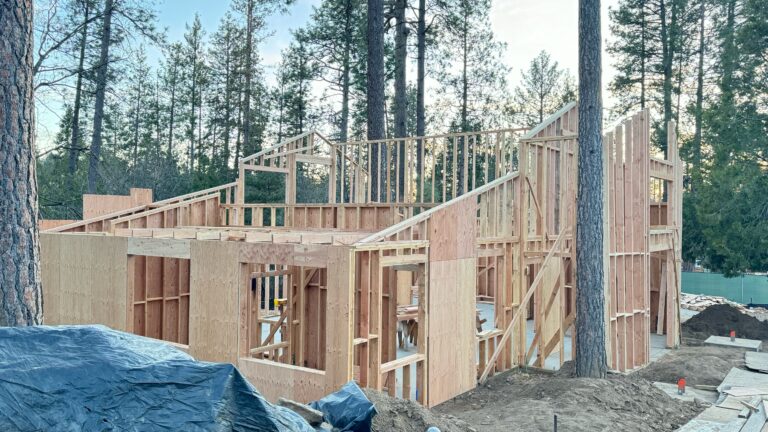Local experts counsel on land preparation prior to El Niño
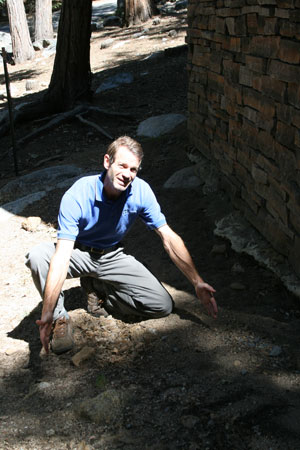
Following a Tuesday, Sept. 1 Mountain Disaster Preparedness presentation and discussion of the possible effects of the coming El Niño, attention of attendees turned to erosion prevention and water capture.
MDP plans an additional symposium in November, date still to be determined, but given that rain may begin as early as October, the Town Crier interviewed several local experts to discuss what could be done to begin preparing for heavy rain and potential runoff and erosion.
Interviewed were Mark Taylor, My Ground, Tricia Pilkington, Natural Habitat Sustainable Living Systems and Julian and Deborah Geisinger, Tree and Landscape Consulting and Care.
All found consensus about balancing cost for land remediation with risk posed by the coming El Niño and the possibility that it may not be repeated frequently in coming annual weather patterns. Said Taylor, “You have to look at the cost of reconfiguring your property, should it run in the thousands of dollars, with the costs of cleaning up afterward.”
Each also agreed that the degree of down slope leading directly to a residence or front door is a determining factor in deciding what to do – that protecting the front of the house from flooding and the foundation of the house from soil erosion that could undermine its stability are important factors to consider.
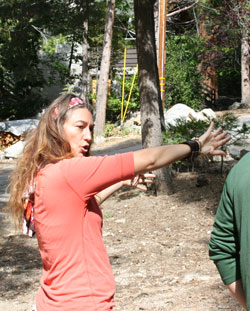
“A lot of managing erosion is slowing the water down, designing ways to slow the water down and receive it,” said Taylor. “If cost is the issue, do what must be done immediately. I like creating ‘chapters’ [segments that can be prioritized and added as needed].”
Julian and Debbie Geisinger talked of identifying where the water wants to go before deciding what to do to help prevent erosion. On property in Idyllwild with significant down slopes, recent rains have likely already established water courses. They suggested property owners look for those water courses and identify and remediate land to work with those already established courses. “It’s important to see where the water wants to go and create retention basins to help control the spillover,” said Julian. “That can be done with soil, with cedar logs and does not have to be an expensive proposition. A series of berms slows the water down. Contour grading and natural materials are the most cost effective.”
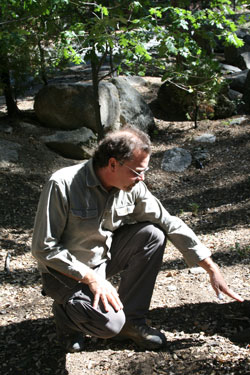
Photo by Marshall Smith
Both Geisingers stressed the importance of identifying potentially hazardous water flow such as roof runoff that could undermine a structure’s foundation and creating fixes that prevent that erosion. They also agreed with Taylor that threats to the front of a house are the first priority on which to focus. “It’s cost-effective to do localized repair unless the front of your house is threatened.” Debbie stressed the importance of having duff mulch and native plantings in place to help slow erosion.
Pilkington, a permaculturist, agreed about identifying water courses. “The first tenet of permaculture is to observe where the water is going,” she said. “The second is how to maximize capture for future use of the water. Earth moving is a very efficient way of capturing water. The more ecosystems you have, the more life proliferates. Maximize the efficiency of what’s present [on the land]. Keep the water on the land. Otherwise you are losing a resource that is going off the mountain.”
This article is not designed to give property owners answers. For that they must consult experts who can assist them in land remediation. What it is intended is to remind property owners that preparation before the El Niño is better than after it has begun.


